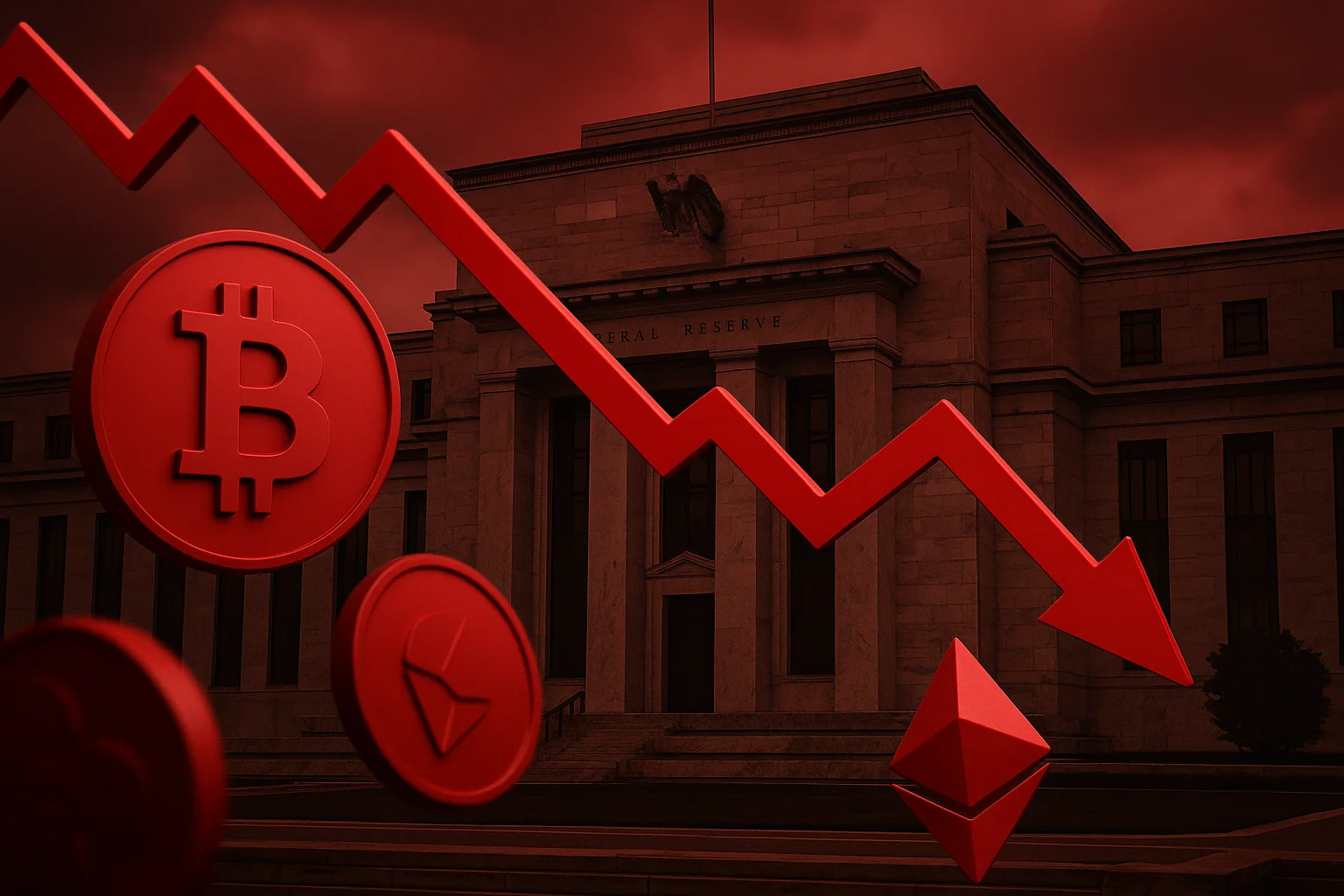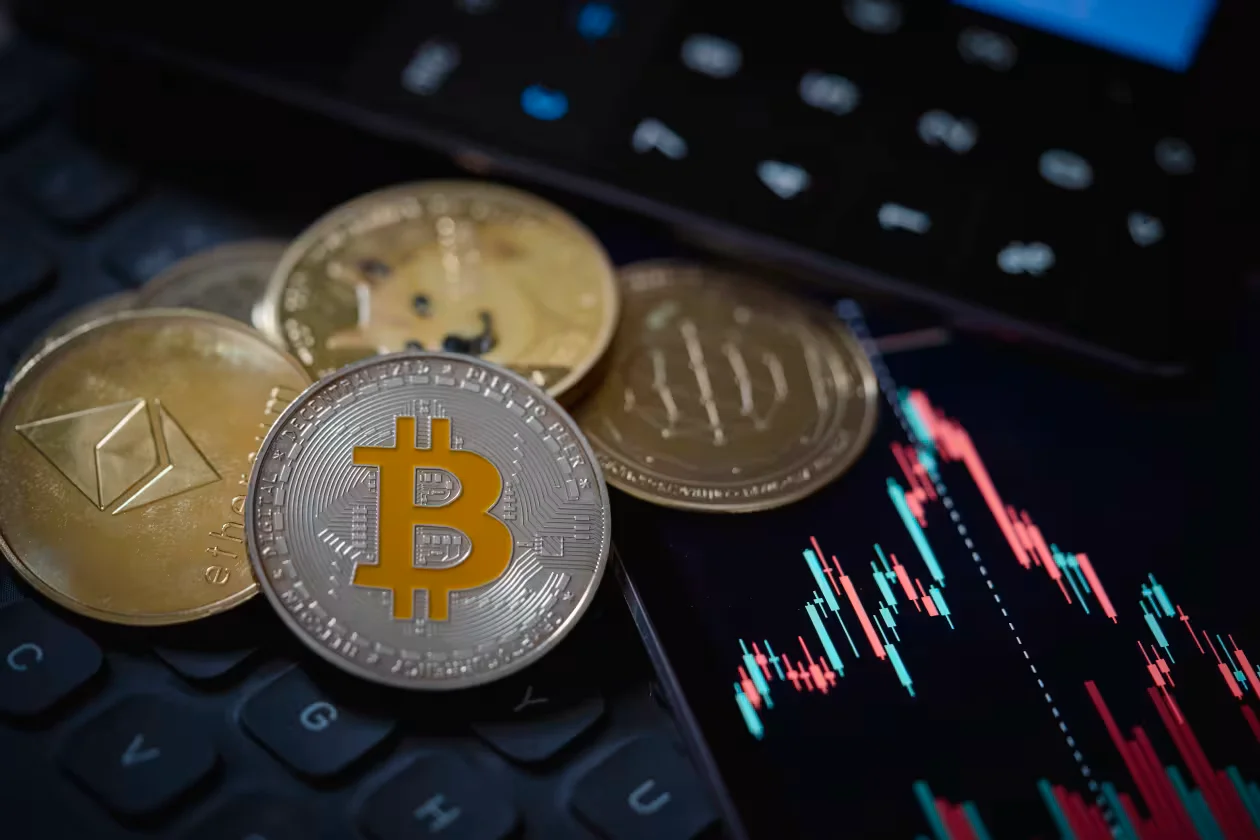News
Bitcoin News
Bitcoin News
Browse all Bitcoin related articles and news. The latest news, analysis, and insights on Bitcoin.
Bitwise Makes 10 Critical Crypto Predictions for 2026
Bitwise CIO Matt Hougan, in his comprehensive assessment of 2026, argued that the crypto market is entering not just a price cycle, but a structural transformation. According to Hougan, the next two years mark a period where the established patterns will become obsolete for the entire crypto ecosystem, especially Bitcoin. Bitwise's 10 predictions show the areas where this transformation will be concentrated.Bitwise's 10 predictionsThe first and most striking prediction is that Bitcoin will break the classic four-year cycle. According to Hougan, Bitcoin will reach a new all-time high in 2026, and the historically established model of "three years of uptrend, one year of downtrend" will become invalid. Although the fact that the last halving occurred in April 2024 strengthens the expectation that 2026 will be a year of decline, Bitwise does not agree with this view. According to the company, 2026 will be a year of uptrend, contrary to expectations.The second prediction concerns Bitcoin's volatility. Bitwise predicts that Bitcoin's volatility will be even lower than high-volume technology stocks like Nvidia in 2026. This is interpreted as a sign that Bitcoin is gradually transforming into a more mature and stable asset class.The third point focuses on ETFs. According to Bitwise, spot ETFs will purchase more than 100% of the new BTC, ETH, and SOL supply released to the market. This prediction shows that institutional demand could reach a level that is not only strong but also exceeds supply.The fourth prediction is that crypto-related company stocks will outperform technology stocks. Crypto-focused companies such as mining firms, exchange operators, and infrastructure providers are expected to outperform classic technology stocks.Fifth is Polymarket. Bitwise predicts that open positions on the decentralized prediction platform Polymarket will reach an all-time high. This indicates a significant increase in interest in on-chain prediction markets.The sixth prediction concerns stablecoins. According to Bitwise, stablecoins will be cited as one of the main causes of currency instability, especially in developing countries. The acceleration of the flight from local currencies could bring the use of stablecoins to the center of political and economic debates.The seventh prediction focuses on on-chain vaults and asset management. Bitwise expects assets managed in on-chain vaults to double by 2026. This growth is linked to the increased adoption of DeFi by institutions.The eighth prediction is related to the legal framework for crypto in the US. If the US passes a crypto market structure law, according to Bitwise, Ethereum and Solana could reach new all-time highs. Regulatory clarity is considered critical, especially for smart contract platforms.The ninth prediction is quite ambitious. Bitwise suggests that all Ivy League universities will direct at least half of their endowment funds directly or indirectly to crypto assets. This step could be a significant turning point in terms of the academic and institutional legitimacy of crypto. The tenth and final prediction is that the ETF trend will continue unabated in the US. Bitwise forecasts that more than 100 altcoin ETFs could be launched by 2026. This development could allow the crypto market to offer a much wider range of investment products.

US November Employment Exceeds Expectations, Unemployment Rises: How Did Bitcoin React?
The latest data on the US labor market indicates that the slowdown in the economy is becoming more pronounced. In November, non-farm employment increased by 64,000 people, while the unemployment rate rose to 4.6%, reaching its highest level in four years. The data had been delayed due to the government shutdown in Washington, and this delay revealed a weaker picture of the labor market than expected.According to the report released Tuesday by the US Bureau of Labor Statistics (BLS), the increase in non-farm employment in November was slightly above economists' expectations. Market expectations were for an increase of 50,000 people. However, although the headline figure exceeded expectations, the rise in the unemployment rate and revisions to the previous month indicate a weakening overall trend in the labor market.With the November data, the unemployment rate rose to 4.6%. This rate exceeded both the market expectation of 4.4% and the 4.4% recorded in September. Thus, the unemployment rate in the US reached its highest level in almost four years. Rising unemployment has reinforced concerns that demand in the labor market is gradually cooling.Employment data for October presented an even more striking picture. According to the data, employment decreased by 105,000 people in October. In September, employment increased by 119,000 people. This sharp drop in October is largely attributed to the US federal government shutdown. The temporary absence of public employees from their jobs and disruptions to some data collection processes put downward pressure on the figures.When the November and October data are considered together, it is seen that the US labor market has shown a more fragile appearance than expected in recent months. The slowdown in the pace of employment growth and the rise in the unemployment rate indicate that signals of a cooling in the economy are strengthening.How did Bitcoin move?Following the release of the data, limited reactions were observed in financial markets. Bitcoin gave back some of the small gains it had recorded before the report, briefly falling to the $87,000 level. US stock futures indices, on the other hand, shifted slightly from positive to slightly negative. On the other hand, the 10-year US Treasury yield remained flat at 4.17 percent. Prior to the employment data, markets were pricing in a 75 percent probability that the Federal Reserve (Fed) would keep interest rates unchanged at its January meeting. Following the release of the data, there was no significant change in these expectations. This indicates that investors do not expect a sudden shift in the Fed's monetary policy in the short term. The overall picture shows that the US economy has not entered a strong contraction, but there has been a significant loss of momentum in the labor market. New employment and inflation data to be released in the coming months will continue to be critical for expectations regarding the Fed's policy steps.

Grayscale: Bitcoin is preparing for a new peak in 2026
Grayscale, in its 2026 outlook report, argued that the cycle for Bitcoin is not yet over. The company, one of the world's largest digital asset managers, expects Bitcoin to reach a new all-time high in the first half of 2026. According to the report, the crypto market is moving away from the volatile and speculative structure of previous years and entering a more mature period where institutional actors are gaining weight.Grayscale's hopeful prediction for BitcoinGrayscale predicts that 2026 will be a year of "accelerating structural transformations" in digital asset investments. Two main dynamics are behind this transformation. First, increasing public debt and the perception of risk towards fiat currencies are directing investors towards alternative stores of value. The second element is the clarification on the regulatory front. According to the company, while crypto assets have long been kept on the periphery of the system, they are now being drawn into the mainstream financial infrastructure. The combination of these two factors is expected to accelerate new capital inflows, increase adoption among wealth managers and institutional investors, and lead to deeper integration of public blockchains with traditional markets. Grayscale believes this environment will boost not only Bitcoin but also crypto asset valuations in general. It also argues that the classic cycle narrative, characterized by Bitcoin's halving every four years, is nearing its end. The report notes that the crypto market is no longer a niche experience. The ecosystem, containing millions of tokens, has a total market capitalization of approximately $3 trillion. In this universe, Bitcoin and Ethereum, with their limited supply and monetary characteristics, assume the role of digital commodities and alternative currencies. According to Grayscale, rising debt levels and inflation concerns will continue to support demand for such scarce assets in portfolios.Bitcoin's supply dynamics also reinforce this view. The annual issuance rate has fallen below 1%, and the 20 millionth Bitcoin is expected to be mined around March 2026. The company states that having a transparent and limited supply is becoming increasingly attractive to investors in an environment of rising financial imbalances. Therefore, Bitcoin and Ethereum are expected to be seen as strategic assets rather than short-term trading tools. A "transformation" signal in terms of regulationOn the regulatory side, it is emphasized that a significant transformation is taking place in the US. While investigations and lawsuits against crypto companies have been prominent in recent years, it is stated that this approach is beginning to soften. Court decisions paved the way for spot exchange-traded products; Bitcoin and Ethereum ETPs were launched in 2024, and the GENIUS Act for stablecoins was enacted in 2025. Grayscale expects a comprehensive crypto market structure law to come into effect in 2026 through bipartisan agreement.These developments are also accelerating institutional capital inflows. It is stated that there has been a net inflow of approximately $87 billion into global crypto ETPs since the launch of spot Bitcoin products in the US in January 2024. Despite this, less than 0.5% of assets under management in the US are allocated to crypto. Grayscale believes this percentage could gradually increase in the coming years. Institutions such as Harvard Management Company and Abu Dhabi-based Mubadala are cited as early examples. The increasing institutional weighting has also changed the character of Bitcoin price movements. While previous bull periods saw annual increases exceeding 1,000%, the highest annual increase recorded in this cycle until March 2024 was approximately 240%. Grayscale interprets this as an indicator of more stable and long-term buying and sees the possibility of a deep and prolonged decline in 2026 as relatively low.

Macroeconomic Concerns Hit Crypto: Bitcoin and ETH Drop Sharply
Bitcoin and the cryptocurrency market started the week with a sharp sell-off. As risk aversion intensified in global markets, Bitcoin lost 4% in the last 24 hours, falling to $85,917, while Ethereum's decline was even more pronounced at 6.3%, dropping to $2,915. The sell-off wasn't limited to these two major crypto assets; a general market weakening was evident. According to data, BNB fell by 4%, while XRP experienced a 6% loss. Solana also felt the effects of the selling pressure, declining by 4%. This decline in cryptocurrencies coincided with a negative start to the week for US stock markets. The S&P 500 opened down 0.16%, while the Nasdaq Composite fell 0.59% and the Dow Jones dropped 0.09%. What's behind this decline?Rick Maeda, a research fellow at Presto Research, said there wasn't a clear crypto-specific trigger behind the price pullback. According to Maeda, the main factor was the general pressure on risky assets as cash stock markets opened in the US. The weak start in stocks dragged down all risky assets, including cryptocurrencies. Maeda also pointed out that market liquidity has significantly decreased as the year draws to a close. Weakened liquidity makes price movements more volatile, especially during US trading hours. This means that even relatively limited sell-offs can lead to larger price drops. Vincent Liu, investment director at Kronos Research, pointed to a similar scenario. Liu stated that with the resurgence of macroeconomic uncertainties, risk aversion has rapidly intensified, and low liquidity is turning every small pullback into a wider sell-off. According to Liu, investors have turned to safer assets during this process. The 25 basis point interest rate cut by the US Federal Reserve last week had a limited impact on the markets and was not enough to change the cautious outlook.Will there be no more "Christmas rally"?Following the Fed's third interest rate cut this year, expectations of a "Christmas rally" have also weakened. Bitcoin's continued subsistence below critical resistance levels reduces the likelihood of a strong recovery towards the end of the year. It is stated that positions are being taken more cautiously before the US inflation data expected to be released this week, and therefore prices have become more sensitive to relatively small fund movements.On the other hand, a different interpretation of the market decline came from China. Crypto trader "NoLimit," in a post on the social media platform X, suggested that the decline in prices may be linked to the slowdown in mining activities in China's Xinjiang region. According to Jianping Kong, Chairman of Nano Labs and former co-chair of Canaan, at least 400,000 mining devices in China have recently been taken offline. Kong stated that the total hash rate of the Bitcoin network dropped by approximately 8 percent, or around 100 exahashes per second, in a single day.Min Jung of Presto Research said that mining activity in China has revived in recent months thanks to cheap energy and idle data center capacity, but this recovery is quite fragile. It is not surprising that such operations have accelerated after the People's Bank of China announced at the end of November that it would take tougher measures against illegal crypto activities.Nevertheless, experts emphasize that there is no clear evidence that miners in Xinjiang have sold large amounts of Bitcoin. According to Liu of Kronos Research, pressure from China may affect hash rates and prices in the short term, but this is expected to be a temporary effect. Liu states that Bitcoin's fundamental dynamics remain strong regardless of such developments.

Barclays Warns of a Lackluster 2026 for the Crypto Market
In its year-end report, Barclays painted a cautious picture for the cryptocurrency markets in 2026. According to the bank, the coming year will be a period of declining trading volumes, weakening investor appetite, and a lack of clear catalysts to trigger a new upward trend. This outlook is particularly challenging for individual investor-focused platforms like Coinbase and Robinhood, which derive a significant portion of their revenue from spot market trading. The report emphasizes that crypto markets have historically been largely driven by strong narratives and noteworthy developments. Intense inflows into spot Bitcoin ETFs in March 2024, or political developments in the US highlighting crypto-friendly rhetoric, led to short-lived surges in trading volume. However, according to Barclays analysts, in the absence of such events, it seems difficult for the market to generate strong momentum on its own. The bank expects spot crypto trading volumes to trend downwards in fiscal year 2026 and sees no clear trigger to reverse this trend. This slowdown in spot markets translates directly into revenue pressure, especially for platforms like Coinbase and Robinhood. Analysts note that these companies, which benefited significantly from individual investor interest during the recent bull run, are now facing a calmer market environment. The decline in trading volumes is limiting fee revenue, while high operational costs are putting additional pressure on profitability. There are question marks regarding regulationIn Barclays' report, the regulatory aspect stands out as an area with long-term potential but short-term uncertainty. The CLARITY Act, currently under consideration in the US, aims to clarify the framework for whether digital assets are considered commodities or securities. This bill could make it clearer which assets fall under SEC oversight and which under CFTC oversight. According to the bank, such regulation could reduce the operational risks of crypto companies and pave the way for new products, particularly tokenized assets. However, given potential legal challenges and the implementation process, the passage of the bill through the Senate is not guaranteed to significantly boost the market by 2026. Coinbase holds a special place in Barclays' analysis. While the company is trying to expand into areas such as derivatives and tokenized stocks, according to the bank, weakness in spot trading volumes in the short term is overshadowing the impact of these initiatives. Therefore, Barclays lowered its target price for Coinbase stock to $291 and adopted a more conservative profit expectation.On the tokenization side, interest continues to grow. BlackRock, Robinhood, and some other major players are conducting pilot projects in this area. Despite this, Barclays believes that tokenization is still in its early stages and will be difficult to make a significant contribution to company balance sheets in 2026.Looking at the overall picture, Barclays defines 2026 as a "transition year" for the crypto markets. In this period, where individual investor activity is weak and short-term momentum is limited, sector players are focusing more on long-term strategies, regulatory compliance, and new product infrastructure. When and to what extent these investments will yield returns remains uncertain for now.

As the Year Draws to a Close, Bitcoin and Altcoins Have Slowed Down
The cryptocurrency market declined as it entered the last full trading week of the year, amid weakness in global risk appetite. Investors are adopting a cautious stance, particularly due to increasing questioning of high valuations in technology stocks, a loss of momentum in US equity markets, and conflicting signals from the US Federal Reserve (Fed). This cautious atmosphere has caused volatility in traditional markets to be reflected in crypto assets as well.Stagnation in Bitcoin and altcoinsAccording to market data, Bitcoin traded at around $89,600 on Monday morning, down approximately 0.5%, and struggled to hold just above last week's lows. Ethereum also saw limited losses, falling to around $3,120. Major altcoins such as XRP, Solana, and Dogecoin experienced losses of up to 2%. The overall picture revealed that risk appetite remains fragile and buying appetite is weak. This volatility occurred despite US stock index futures showing a limited recovery in the morning hours following last week's sell-off in technology stocks. While S&P 500 and Nasdaq 100 futures rose around 0.2%, investors remain doubtful about whether current valuations of technology companies can be sustained into 2026. Increased spending on AI investments and the question of how much this spending will be supported by profitability are putting pressure on risky assets. This cautious approach is also hindering recovery efforts in the cryptocurrency market following the sharp pullback in October. A significant drop in trading volumes has been observed in recent days, and low liquidity is making price movements more volatile. This is leading to a defensive tone in the market. Jeff Mei, the operations director of the BTSE crypto exchange, notes that investors are reluctant to invest in crypto assets. According to Mei, the decline in October, coupled with concerns that the US stock market is overvalued and the Fed's unclear messages, is causing investors to shy away from risk. However, Mei emphasizes that net inflows into Bitcoin ETFs continue and that the Fed's securities buybacks are providing liquidity to the system. He points out that this liquidity has the potential to flow into both stocks and cryptocurrencies over time.Mei also states that year-end position adjustments play a significant role in the current weakness. Investors taking profits and waiting until early 2026 to open new positions is increasing selling pressure in the market.Augustine Fan, head of research at SignalPlus, warns that low liquidity could further exacerbate downward movements in the coming weeks. Fan says that trading volumes have decreased significantly since a specific market event in October, and overall market sentiment has turned negative. In this environment, he notes that Bitcoin and Ethereum are being used as a kind of balancing factor by investors as they adjust their portfolio risks. Fan emphasizes that short-term price movements should not be exaggerated, stating that hourly or daily fluctuations can be misleading under current conditions. However, he adds that overall sentiment remains weak and that pressure on prices may continue until the end of the year.

$4.5 Billion Worth of BTC and ETH Options Expire Today
In the crypto derivatives markets, attention is focused on the high-volume Bitcoin and Ethereum options expiring on Friday, December 12th. With a total nominal value of approximately $4.3–$4.5 billion, these options are expected to expire, creating a cautious atmosphere across the market. The approaching end of the year, weakening liquidity, and recent macroeconomic developments are causing investors to avoid taking directional positions.Bitcoin and Ethereum options expire today.According to data, approximately 39,000 Bitcoin option contracts are expiring today. The total nominal value of these contracts is around $3.6-$3.7 billion. The put/call ratio in Bitcoin options is around 1.1, indicating a slight advantage of short positions over long positions. The "max pain" level in the market is around $90,000. The current price hovering near this level suggests that the option expiration may have a limited impact on the spot market. The highest level of open interest in the options market is at $100,000. At this strike price, there are approximately $2.7 billion in open positions. Additionally, there are significant open positions totaling around $2 billion at the $80,000 and $85,000 levels. According to Coinglass data, the total Bitcoin options open interest across all exchanges has reached $54.6 billion. Deribit notes that pricing is largely stuck around $90,000 and that there is no clear directional expectation in the market. Deribit's assessment indicates that the balance between call and put options shows that investors expect limited volatility for this expiration date. It is emphasized that the market tends to maintain its current range until a new catalyst emerges. A similar picture is observed on the Ethereum front. Approximately 247,000 ETH options contracts expire today. The total nominal value of these contracts is around $768-770 million. In Ethereum options, the maximum pain level is calculated at $3,100, while the put/call ratio is fluctuating between 1.22 and 1.24. This ratio indicates that demand for selling hedging is relatively stronger on the Ethereum side as well. The total open position for ETH options across all exchanges is approximately $12 billion.Deribit analysts note that positioning in Ethereum options has shifted towards a more neutral structure, but the concentration seen in call options above $3,400 reveals that investors are willing to price in sharper price movements should volatility increase again.On the macro side, the 25 basis point interest rate cut by the US Federal Reserve this week has largely been priced in by the markets. Greeks Live analysts emphasize that it is premature to view this step as the beginning of a monetary expansion cycle. They point out that liquidity in the crypto markets has fallen to historically weakest levels as the year-end and Christmas period approach. This situation poses an obstacle to a strong and sustained rally in the short term. Looking at the spot markets, the total cryptocurrency market capitalization is hovering around $3.2 trillion. Bitcoin briefly rose above $93,000 but encountered resistance at that level and retreated back to the $92,000 range. Ethereum traded in a narrow range around $3,200 in the last 24 hours. While the altcoin market generally shows a sideways trend, limited gains were observed in privacy-focused projects such as Solana, Bitcoin Cash, Monero, and Zcash. The overall picture suggests that the market remains calm for now, despite high-volume options expiry times.

Fed Decision Triggers Volatility in Crypto Market: Bitcoin and Altcoins Shaken
The crypto market entered a period of uncertainty following the Federal Reserve's announcement of a quarter-point interest rate cut. Initially welcomed, the decision was quickly digested due to internal committee disagreements and the lack of clear indications of further easing; risk appetite weakened, and prices turned down again. Futures data, however, shows that traders have already shifted to new expectations, pricing in a near 40% probability of a cut by March. This situation has carried the market into the final weeks of the year on an uncertain footing. At the FOMC meeting, the federal funds range was lowered to 3.5-3.75. The vote passed 9-3; two regional presidents opposed the cut, while Fed Governor Stephen Miran advocated for a more aggressive half-point reduction. The emphasis on "carefully evaluating incoming data" was closely watched, as it is language used in the past during periods of slowing interest rate cut cycles. This tone dampened hopes for further easing. Bitcoin experienced sharp fluctuations between $93,200 and $91,700 after the decision; Ethereum also exhibited similar volatility in the $3,340-$3,440 range. Solana, XRP, and BNB were also caught in the same fluctuations. The Fed's $40 billion Treasury bond purchases, starting on December 12th, have brought the "quantitative easing" debate back to the forefront. A similar program in 2019 was implemented for reserve management purposes; today, it is being discussed that its effect may be limited but potentially directional. What do the experts say?Analyst comments reflect the confusion in the market. According to the CryptoQuant team, BTC has the potential to break through the $99,000 and $102,000 resistance levels and head towards $112,000 if the Fed becomes more clearly "dovish." However, this requires not only further rate cuts but also a more consistent guide from the Fed regarding its inflation path until 2026. Nic Puckrin of Coin Bureau stated that the decision being less hawkish than expected gave the market a brief respite, but the fact that only one rate cut was predicted dampened this relief. Another view came from David Hernandez of 21Shares; according to Hernandez, the rate cut itself is the first sign that could increase risk appetite. "Today's rate cut is a lifeline thrown to sinking Bitcoin," he says, recalling the historical tendency of cheaper liquidity to flow into crypto. However, the price action in the market did not immediately confirm Hernandez's optimism. Bitcoin retreated to the $90,000 threshold the morning after the decision. After a brief jump above $94,500 on Tuesday, BTC returned to the middle band after failing to break this resistance. Over $514 million in leveraged positions were liquidated in the last 24 hours; losses from long positions were approximately three times greater than those from short positions.

SpaceX Makes Massive $94 Million Bitcoin Transfer
SpaceX's Bitcoin transactions are back in the spotlight. According to data shared by the on-chain analytics platform Lookonchain, the company transferred 1,021 Bitcoins (approximately $94.48 million) earlier today. The transaction is thought to have been sent to Coinbase Prime's custody service. According to records, this transfer is one of the largest outflows SpaceX has made in recent weeks and suggests the company is restructuring its institutional-level crypto asset management. A stream viewed via Arkham Intelligence reveals the transfer was completed approximately 48 minutes ago, with assets moving from a SpaceX-labeled wallet to an address believed to be associated with Coinbase Prime Custody. Similar transactions have been observed several times in recent weeks; SpaceX has been recorded making outflows of varying amounts of BTC at short intervals. This strengthens expectations that the company is repositioning its BTC reserves in line with a specific custody strategy.SpaceX is preparing for an IPOThe timing of the transfer is also noteworthy. Elon Musk's SpaceX is preparing for one of the largest initial public offerings (IPOs) in the company's history. According to Bloomberg, SpaceX aims to go public by late 2026 with a valuation of $1.5 trillion. If this level is achieved, SpaceX will approach the size of Saudi Aramco's record-breaking $29 billion IPO in 2019. The goal is to raise between $30 and $40 billion through the IPO; however, the process could potentially extend into 2027. The company's financial projections are heavily reliant on Starlink's growth. Revenues are expected to reach approximately $15 billion in 2025 and rise to between $22 and $24 billion in 2026. The expansion of Starlink's direct mobile connectivity services and the progress of Starship's testing for lunar and Martian missions are two key factors strengthening SpaceX's cash flow. Therefore, it's not surprising that the company wants to enter the IPO process with a strong balance sheet. Bitcoin transfers are also being closely monitored within this framework. SpaceX has confirmed in the past that it holds crypto assets on its balance sheet; Musk has stated that the company has generated positive cash flow for years and runs regular share buyback programs for employees. Recent BTC movements indicate both a professionalization of reserve management and a tendency to work with regulation-friendly institutions. On the other hand, it is stated that the $420 level set by SpaceX for share buybacks has pushed the company's previous valuation of $800 billion upwards. In a structure that includes giant investors such as Fidelity, Google, Valor Equity Partners, and Founders Fund, it is said that the share sales and buybacks aim to clarify the fair market price before the IPO.

Bitwise Expects 10-20X Growth for Cryptocurrencies
Matt Hougan, Bitwise's chief investment officer, said the crypto market could easily grow 10 to 20 times over the next decade. According to Hougan, this isn't just a bold prediction; a structural transformation is imminent, with tokenization, Bitcoin, and stablecoins rapidly moving into the mainstream. In a note to investors, he described crypto's long-term growth as "the highest-confidence bet of his career."This optimism stems from statements made last week by Paul Atkins, the former chairman of the U.S. Securities and Exchange Commission. In an interview with Fox Business, Atkins said he believes all U.S. stock markets will be traded on-chain within a few years. This approach, in Hougan's eyes, reveals a huge difference in scale. While the total size of the U.S. stock market is approximately $68 trillion, the total volume of on-chain tokenized stocks today is only around $670 million. This gap clearly highlights the early stages of the transition. According to Hougan, this outlook means that the fundamental building blocks of crypto (stablecoins, tokenization, and Bitcoin) will become even more important in the coming period. He also believes that a number of new use cases, such as oracle markets, DeFi, privacy technologies, digital identity solutions, and next-generation capital market instruments, will grow rapidly.While uncertainty increases, broad market exposure is more attractiveAnother point Hougan emphasizes is that no one can know for sure which blockchain will dominate in the long term. Hougan, who has worked full-time in the crypto industry for eight years and is in constant contact with investors, founders, and researchers, says it's impossible to predict a single winner at this stage. Hundreds of variables, including regulations, macroeconomic conditions, technological advancements, strategic moves by teams, and even luck, will influence the outcome.Therefore, Hougan states that he adopts a broad-based approach to his investment strategy. While he notes that he takes small positions in certain projects, the backbone of his portfolio consists of crypto index funds weighted by market capitalization. This approach allows him to both capitalize on growth and mitigate the risk of overinvesting in the wrong project. "Even if the market grows 100,000 times, it's possible to fall behind because you bet on the wrong horse," Hougan says, reminding us of the risky nature of individual chain selections. He believes that as the industry becomes increasingly complex, index funds will become a much more important investment tool in 2026. In his view, these funds offer an ideal solution for both managing uncertainty and capitalizing on the sector's broader rise.While uncertainties persist in the crypto market, ranging from regulation and technology to investor behavior and macroeconomics, Hougan believes that the long-term growth potential presents a historically unique opportunity. Therefore, he sees 10-20x growth as a "easily achievable" target.

CFTC Launches Critical Pilot Program for Bitcoin, ETH, and USDC
The U.S. Commodity Futures Trading Commission (CFTC) has taken one of the most concrete steps toward bringing crypto assets to the center of regulated finance. The agency has officially launched its "digital asset pilot program," which opens the door to the use of Bitcoin, Ether, and USDC as collateral in derivatives markets. The program both demonstrates the regulatory body's transformation in its approach to crypto and focuses on the integration of tokenized assets into traditional finance. The announcement came from Caroline Pham, the CFTC's de facto Chair. Pham has long been a prominent figure within the agency in updating the framework for crypto assets; she previously launched the "Crypto Sprint" initiative and last week announced that Bitnomial was the first exchange to list regulatory-approved spot crypto products.Pham summarized the goal of the new program as "maintaining the global leadership of U.S. markets by embracing responsible innovation." According to her, the ability to use tokenized assets as collateral will help market participants manage capital more efficiently and enhance the real-time monitoring capacity of regulators. The pilot program is initially limited to Bitcoin, Ether, and USDCAccording to the framework announced by the CFTC, futures brokers (FCMs) will be able to accept only BTC, ETH, and USDC for the next three months. Participating institutions will report the total amount of digital assets held in their client accounts to the CFTC weekly. Furthermore, any operational issues, disruptions, or system errors that could affect digital assets used as collateral will be required to be immediately reported to the regulator.This framework allows the CFTC to monitor market behavior in a gradual and controlled manner while also generating valuable data on how the use of tokenized collateral works in practice.The CFTC also released new guidance jointly prepared by its three divisions on the same day. These guidances clarify how real-world assets, such as tokenized U.S. bonds and money market funds, are valued under the current regulatory framework. Topics such as custody, segregation, valuation shards, and operational risk have been redefined. The agency also withdrew its staff advisory, issued in 2020, which restricted FCMs from accepting virtual currencies as collateral. The CFTC stated that this guidance was outdated with the enactment of the GENIUS Act. The GENIUS Act, passed this summer, specifically sharpened the framework for stablecoin use.Strong support from the industry: "A milestone for the US"Leading figures in the crypto industry welcomed the move. Coinbase Chief Legal Officer Paul Grewal said the decision "proves once again that digital assets provide real benefits in terms of speed, cost, and risk management in payments." Circle President Heath Tarbert emphasized that the use of regulated stablecoins will improve settlement processes and support 24/7 trading.Crypto.com CEO Kris Marszalek described the decision as "a significant step toward making the US a global hub for crypto innovation." Ripple CEO Jack McDonald also stated that recognizing tokenized assets as collateral will increase capital efficiency and strengthen the competitiveness of US financial markets.

$716 Million Inflow into Crypto Funds: XRP and Chainlink Lead
Digital asset investment products saw a significant recovery last week. According to CoinShares data, global ETPs saw a total net inflow of $716 million. This increase signals a revival of investor appetite after the lows in November. Total assets under management (AuM) thus rose to $180 billion, a figure that, while strong, still falls short of the $264 billion peak seen in 2021.Inflows were spread throughout the week, with slight outflows on Thursday and Friday due to inflation signals from the US. Despite this, the overall improvement in market sentiment remained.The largest inflows came from the US, Germany, and CanadaThe report also points to a broadly positive picture across geographic distribution. The US, with $483 million, Germany, $96.9 million, and Canada, with $80.7 million, were the three strongest regions for the week. Consequently, buying flows were observed in nearly all major investment centers. This is considered another indicator that institutional investors' risk appetite is beginning to increase again. Bitcoin sees $352 million inflows, sharp outflows in shortsBitcoin once again saw the largest share of the week. BTC products received a net inflow of $352 million, bringing its total year-to-date inflow to $27.1 billion. While this figure is strong, it falls short of the $41.6 billion inflow recorded in 2024.Another significant indicator is the strong outflows in Bitcoin shorts.Last week, shorts saw an outflow of $18.7 million, the largest since March 2025. Similarly, at that time, prices nearing bottom indicated that investors were beginning to withdraw from bearish positions. Today's data suggests that negative sentiment is weakening.Record interest in XRP and ChainlinkThe most notable movement in recent weeks occurred in altcoins.XRP surged ahead with a weekly inflow of $245 million, bringing XRP's total inflow for the year to $3.1 billion. This figure far surpasses the $608 million inflow in 2024, demonstrating a strong institutional focus. On the Chainlink side, a historic record was broken. Link products saw $52.8 million inflow last week. This was the largest weekly inflow on record and represents over 54% of the fund's total assets. According to the figures, Chainlink was among the fastest-growing choices of institutional investors.Multi-Asset, Sui, and Solana See Moderate InflowsMulti-asset products saw $31.8 million inflows, Solana saw $3 million, and Sui saw $4.2 million. While these inflows are more limited, they indicate a general recovery trend in the altcoin market, not just a few major assets.

Bitcoin Starts Fed Week Above $91,000: What Are the Expectations?
Bitcoin opened the new week above $91,300, with global markets focused on the US Federal Reserve. Asian stock markets opened positively, and investors are awaiting the Fed's interest rate decision on Wednesday. A 25 basis point rate cut has largely been priced in, but cautious messages from Fed Chair Jerome Powell are expected to dampen risk appetite.In Asia, technology stocks led a limited rally; the MSCI Asia index rose approximately 0.2 percent. US futures retreated slightly, while the dollar index showed a weaker tone. This trend also shaped the direction of crypto markets.Bitcoin Faces Resistance as It Approaches $94,000Bitcoin continued last week's recovery, rising 2 percent in the last 24 hours, but is facing resistance as it approaches the $94,000 region. Analysts indicate that if the current momentum holds, the price could move towards the $98,000-$100,000 range. Ethereum saw a 3 percent daily increase to $3,135. While the last week's performance exceeded 10 percent, there are comments that Ethereum has strengthened technically after the development team completed the Fusaka update. BNB, Solana, stETH, and XRP also saw slight increases. In contrast, Cardano was the weakest link today, falling 1.4 percent.Market sentiment remains fragileDespite the recovery in the crypto market, overall sentiment remains fragile. CryptoQuant's Bull Score index falling to zero indicates that the market is still experiencing the effects of a bear cycle. CryptoQuant CEO Ki Young Ju stated that unless new liquidity enters the market, the upward trend may weaken, and the $55,000-$70,000 range is a potential price target for the next year. K33 Research, on the other hand, highlights some factors that could be supportive in the medium term; it is noted that 401(k) regulation changes expected at the beginning of 2026 could generate corporate retirement flows into Bitcoin.Fed Week: Expectations are strong, tone is cautiousIn global markets, the Fed's upcoming interest rate decision remains the main driver. Recent economic data, particularly the consistent monthly increase in the core personal consumption expenditures price index, has strengthened the likelihood of an interest rate cut. Money markets are pricing in an 88% probability that the Fed will cut by 25 basis points this week. Improved investor confidence data and a decline in inflation expectations also support this expectation.Still, analysts emphasize that a cautious tone may prevail in the Fed's forward-looking communications, which could increase volatility in risky assets. The mixed start to the week in global stock markets also reflects the impact of these expectations. Bitcoin's price behavior in recent months is reminiscent of the corrections seen in past cycles in 2013, 2017, and 2021. Analyst Alex Kuptsikevich notes that the market has already experienced a sharp pullback spanning two months, and volatility may increase again as clarity on monetary policy is provided.

JPMorgan Reveals the Key Factor Determining Bitcoin's Short-Term Path
JPMorgan analysts say that the main factor driving Bitcoin's short-term price movements is no longer miners' selling pressure, but MicroStrategy's (Strategy/MSTR) balance sheet strength. According to a report published by the bank on Wednesday, the company's ability to stay afloat without selling its Bitcoin holdings creates a critical signal of confidence in the market; it could even be decisive in BTC overcoming the current pressure.Pay attention to Strategy for Bitcoin!Analysts emphasize that the recent hashrate and difficulty drops on the Bitcoin network are attributed to two key factors. China's recent reiteration of the ban, citing increased private mining activity, and the withdrawal of high-cost miners outside of China due to rising energy prices and the suppression of the BTC price. Normally, a decrease in hashrate increases miners' revenues; however, JPMorgan notes that this benefit has not materialized because the Bitcoin price is still below its production cost. The bank estimates that Bitcoin's average production cost fell from $94,000 in November to $90,000 as of December. This cost is highly sensitive to electricity price assumptions; every $0.01 kWh increase equates to an additional cost of approximately $18,000 for high-cost generators. Consequently, some miners have been forced to sell BTC in recent weeks due to profit pressure.According to JPMorgan, despite this outlook, miners are not the primary price determinant. The bank's key indicator is MicroStrategy's "enterprise value/Bitcoin reserve" ratio. This metric, calculated by dividing the sum of debt, preferred stock, and market capitalization by the value of the company's BTC holdings, is currently at 1.13. A ratio above 1 means MicroStrategy will not be forced to sell BTC to meet its debt and dividend obligations, preventing a new sell-off in the market. The report also highlights MicroStrategy's recently established cash reserves of $1.44 billion. This reserve is sufficient to cover the company's dividend and interest payments for up to two years. JPMorgan states that this step makes forced BTC sales unlikely "for the foreseeable future." Analysts believe this reserve serves as a significant buffer for market stability and that the current weakness in Bitcoin may therefore be limited.In addition, MSCI's decision in mid-January is also being closely watched. JPMorgan believes that the possibility of MicroStrategy being removed from the indexes has been largely priced in by the markets, and states that a negative decision would create limited additional pressure. Conversely, it is stated that if the company remains on the indexes, both MSTR shares and Bitcoin could see a strong recovery.Despite all the short-term uncertainty, the bank's long-term model remains optimistic about Bitcoin. JPMorgan's theoretical price target, derived from its volatility-adjusted comparison of BTC to gold, remains at $170,000. Analysts predict that if the market stabilizes, Bitcoin could approach this value within the next 6-12 months. Market data indicates that the BTC price is currently trading around $91,200.

A Critical Day for Bitcoin and ETH, Worth $4 Billion
Another critical threshold is being passed in the futures and options market on Friday; contracts totaling over $4 billion in value for Bitcoin and Ethereum are expiring. Derivatives volumes have increased significantly in recent weeks, particularly in Binance futures, suggesting the market is preparing for impending volatility. Today's chart reflects both cautious and selective risk appetite.Bitcoin and ETH options expiringAccording to Deribit data, the total notional value of BTC and ETH options expiring today is around $4.07 billion. Bitcoin accounts for $3.4 billion of this. Total open interest stands at 36,906 contracts. The Put/Call ratio for Bitcoin is 0.91, meaning there are slightly more put options than calls in the market, suggesting a balanced, slightly defensive position. The "maximum pain" level for BTC is $91,000; if the price approaches this level, most contracts are expected to expire worthless. Bitcoin is currently trading slightly above this level. There's clearer optimism on the Ethereum side. The notional value of ETH options expiring today is $668.9 million. Open interest stands at 210,304 contracts. The put/call ratio is 0.78, meaning demand for call options on ETH is stronger. The maximum pain point is at $3,050, slightly below the current price. This ratio and price structure suggest a more positive outlook for Ethereum compared to Bitcoin in the short term.Today's expiration represents much smaller volume compared to last week. During the massive event on November 28th, over $15 billion worth of BTC and ETH options expired, meaning the current contract volume is less than a third of that day. This is due to institutional investors increasingly expanding their positions over longer periods. In Bitcoin, in particular, there's a significant accumulation of call options with expiration dates extending into mid-2026. This trend is consistent with institutional views that interest rate cut expectations, ETF demand, and liquidity conditions will be more supportive next year.Derivatives analysis platform Laevitas highlights the steady increase in open interest in recent weeks, highlighting fresh capital inflows into the derivatives market. This suggests investors are preparing for a multi-quarter recovery. As professional movements gain traction, price discovery in the market becomes more systematic.However, the short-term outlook remains mixed. Greeks.live's December 2nd update describes the market as "cautiously optimistic." Analysts say investors are searching for a bottom, but volatile price movements are eroding confidence. The put skew, in particular, remains elevated, meaning the market continues to price in short-term downside risk. Because the sharp moves in February are still fresh in memory, many professionals are avoiding "chasing calls on dips."Amidst this uncertainty, another significant shift is the cooling of volatility. While volatility in Bitcoin has tightened, ETH options have become relatively more attractively priced. This is leading some to turn to Ethereum. Institutional investors are focused on capital preservation and generating sustainable returns rather than seeking quick profits. Deribit also notes that the general trend is toward "controlled and rational strategies rather than chasing 5-10x returns."
